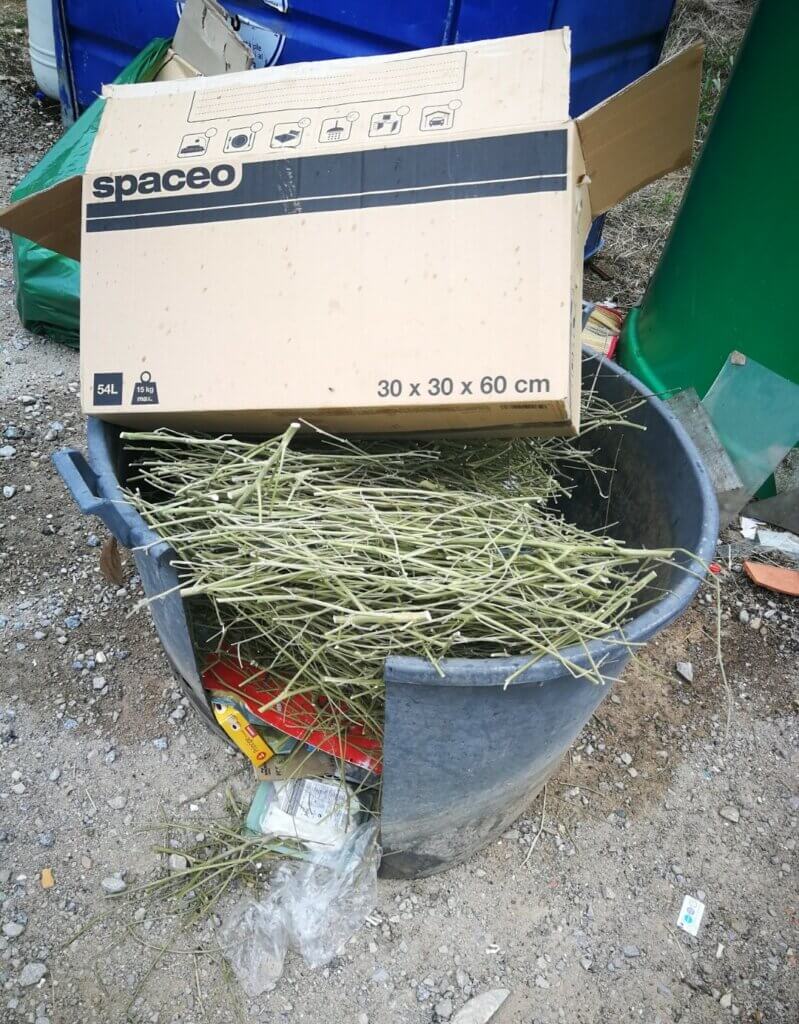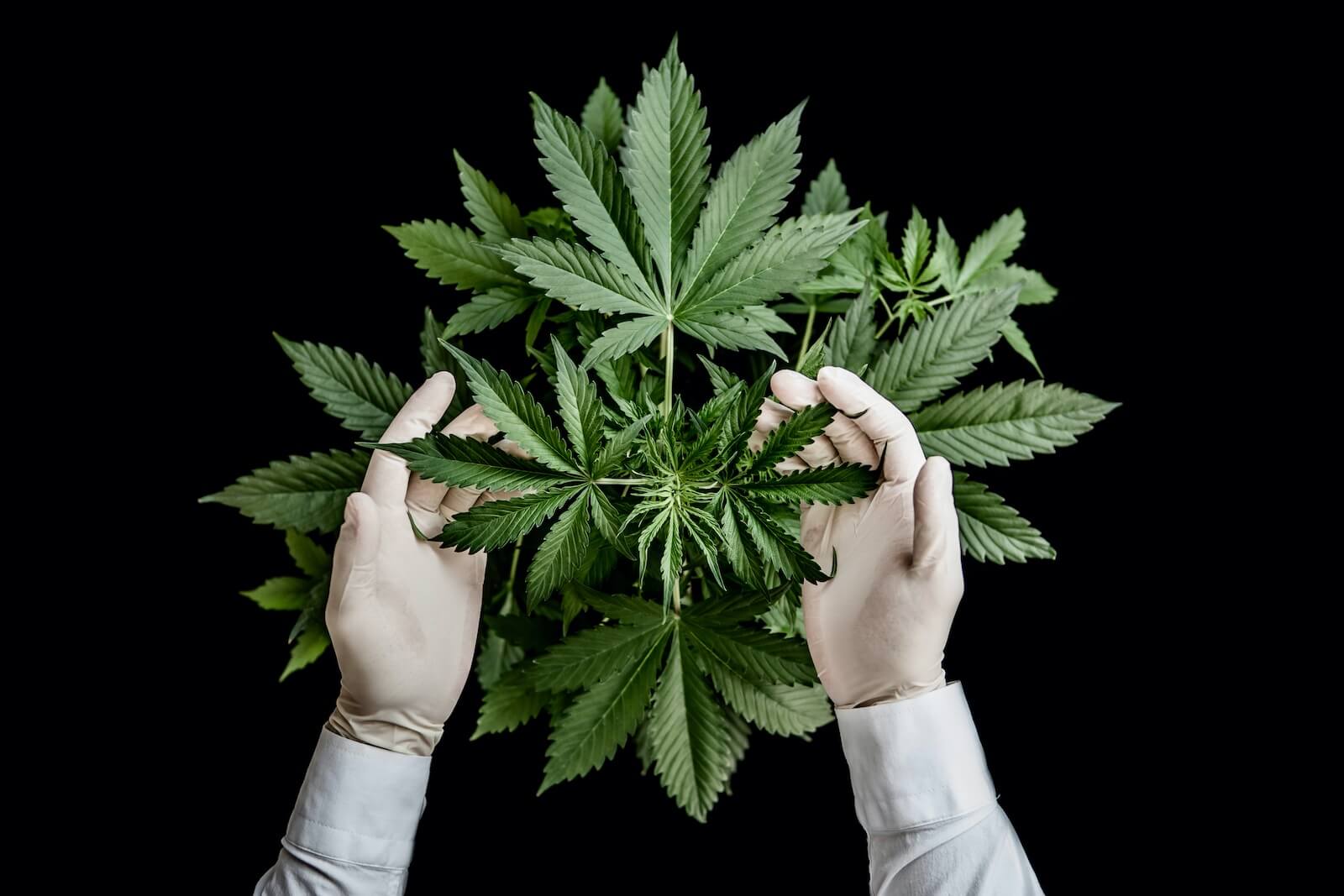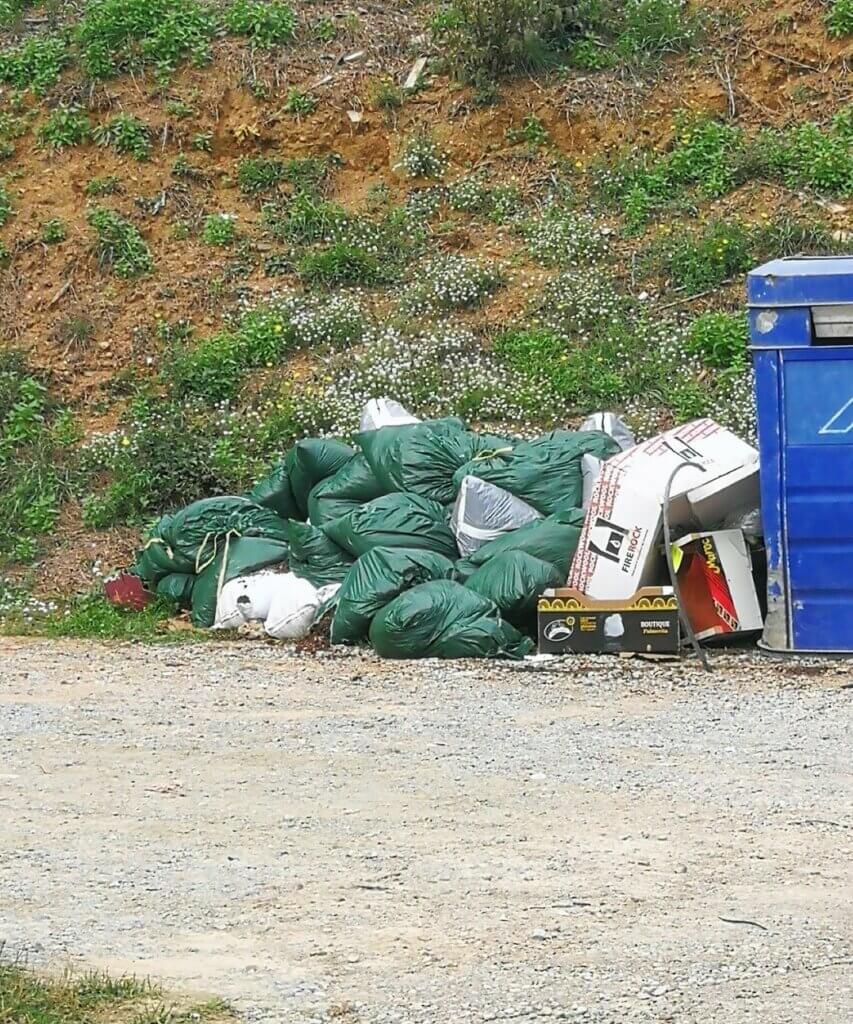Let’s be honest; Growing cannabis indoors is not exactly an environmentally friendly activity, especially when in many cases (if legality allowed it), the plants could be grown in sunlight without any problem. Both the type of cultivation, the practices during it, and the management of the waste generated should be something taken into consideration by the grower since we believe that the fact of generating waste should be understood as a responsibility and not a right.
As you surely know if you follow us, at Alchimia we advocate home-growing, as we believe that it is a right and the best possible solution for the consumer. However, we also understand that it is an activity that must be accompanied by good practices to generate the minimum possible pollution and waste, like any other daily action. Today we invite you to reflect on this question and see what you can do so that your indoor grow causes the minimum possible impact on your environment.

Residues from indoor cultivation: a growing problem
Unfortunately, nowadays it is not uncommon to find news about the dumping of material for indoor cultivation, usually in garbage container areas, although in some cases also in the middle of the forest or mountain. As it is not difficult to understand, the idea of showing up at the nearest recycling center with all their waste material does not exactly appeal to people who grow cannabis in areas where it is not legal to do so, even if it is in small quantities.
As you can see in some of the photos that accompany this text, it is not only that a certain grower pollutes much more than another, or that his way of managing waste is more or less questionable, but also that these types of acts open a debate where, as happens in so many other cases, the righteous end up paying for the sinners. This type of news only achieves one thing for the general public: creating a negative image of the cannabis grower, in most cases diminished by a minority but which, in the end, and unfortunately, is the one that most impact has.
What can be done to generate less waste in the crop?
We are aware that any activity can leave its mark on our planet, no matter how simple and trivial it may seem. It is everyone’s responsibility to collaborate and do everything possible to leave a cleaner world for our sons and daughters, which is why it would be necessary to introduce the old formula of reduce, reuse, and recycle also in the field of cannabis cultivation.

Reuse of pots
The normal thing when one finishes a crop is to reuse the pots used, especially when it comes to textile pots, which have a significantly higher cost than plastic ones. In the case of textile pots, the ideal would be to rinse them with hot water to remove traces of the substrate and then put them in the washing machine. If you suspect that there may be traces of a pest in the fabric, you can always spray the pot with an insecticide, let it dry for a couple of days, rinse it again with water and you will have it ready to use again.
If you have plastic pots that you want to reuse, a good option is to fill a basin with water and 10% bleach and leave them submerged for a few hours. After that, rinse them with water and you can fill them again with substrate to start your new crop. Take a look at the bottom of the pot, and if you see accumulations of white material, these are deposits of salts from the fertilizer you have been using. These accumulated salts can cause problems for your plants in the future, so in this case, the ideal would be to scrub them with warm water, soap, and a kitchen sponge; After that, you can rinse them with water and bleach, rinse them with water and they will be ready.

How to make use of the leftovers from your cannabis harvest
You grow weed for its buds, but… do you throw out everything else? In this article we tell you everything you can do with its leaves, stems and roots so that you don’t waste anything that this wonderful plant has to offer. From a tadty tea with multiple therapeutic properties to making your own paper and helping to save the planet. Don’t miss this guide to making the most out of your harvest and stop throwing away a world of possibilities.
Substrate reuse
Without a doubt, one of the most annoying wastes for many growers is the substrate itself. While it is true that sooner or later you will have to get rid of it, it is no less true that you can reuse your substrate for several crops, at least once or twice. And this is something we recommend especially if you have been using organic fertilizers and adding microlife…it would be a great shame to throw it away!
Normally, you will only reuse the substrate if there were no problems such as pests, fungi, or excess nutrients in the previous crop. If so, you just have to cut your plants and remove the rest of the main stem that has remained in the pot, as well as the first layer of substrate from the pot’s surface, about 2cm. Another option is to remove the soil from the pots and mix it with one of the products that we will tell you about below, although it is usually more practical to use these products directly in your pots, also saving you the work of emptying them and filling them again.

If you decide to reuse your coco coir or your soil, something that we recommend – and we repeat – if there have been no problems in the previous crop, you can use various products to recover the vitality of the growing medium, either solid nutrients or microbial life. At Alchimia you have various solutions:
Of course, apart from reusing it in your next crop, there are many ways to give new life to the soil, especially if you have a yard, a balcony with plants, or a vegetable garden. If you have not saturated the substrate with fertilizer in your previous crop, this already-used growing medium will serve you perfectly to grow almost any other type of plant, from flowers and aromatic plants to garden seeds.
Recycling of growing materials
Reusing other growing instruments such as air extractors, fans or carbon filters can be much more complicated (if not impossible), so the best option is to dispose of them at one of the recycling points near you. The same goes for lighting equipment, which should be stored in places where it will be processed correctly. An excellent advantage of LED lamps, as all their users know, is the long life (up to 7 years) that they have, thanks to which you can forget about getting rid of HPS or HM bulbs from time to time, certainly much shorter than in the case of LED equipment. Regarding this point, keep in mind that there are certain hardware or lighting stores where you can also deposit this type of waste.
Last but not least, you must be very careful with certain packaging, especially with phytosanitary products such as insecticides or fungicides. If there is a green dot on the packaging, this means that you can put it in the yellow container (packaging) without a problem, while if it does not have it, you should take it to the nearest recycling point or center. A quick search on the Internet will tell you about all this.
Disposing of crop residues in incorrect ways can lead to other crimes, or even be the protagonist of an investigation by the authorities and the crop being discovered. Doing it correctly will save you possible headaches and also, speaking in terms of environmental protection, you will be practicing your activity in the best possible way.
Happy harvest!
The articles published by Alchimiaweb, S.L. are reserved for adult clients only. We would like to remind our customers that cannabis seeds are not listed in the European Community catalogue. They are products intended for genetic conservation and collecting, in no case for cultivation. In some countries it is strictly forbidden to germinate cannabis seeds, other than those authorised by the European Union. We recommend our customers not to infringe the law in any way, we are not responsible for their use.
Source link
#Indoor #cultivation #waste #problem #face #Alchimia #Grow #Shop